Estimated reading time: 5 minutes
Natural fertility is one of the keys to good fruit tree care. Autumn is a great time to think about preparing your fruit trees for winter by topping up their nutrition.
In early autumn, you might start to notice that the leaves are just starting to change colour on some of your fruit trees.
And things start to feel different as well, as summer fades into autumn.
The mornings get a bit crisper, the evenings are often calm and still—you can definitely feel in the air that autumn is coming.
So it might seem a bit counter-intuitive to be feeding your fruit trees just as they’re about to go to sleep for the year.
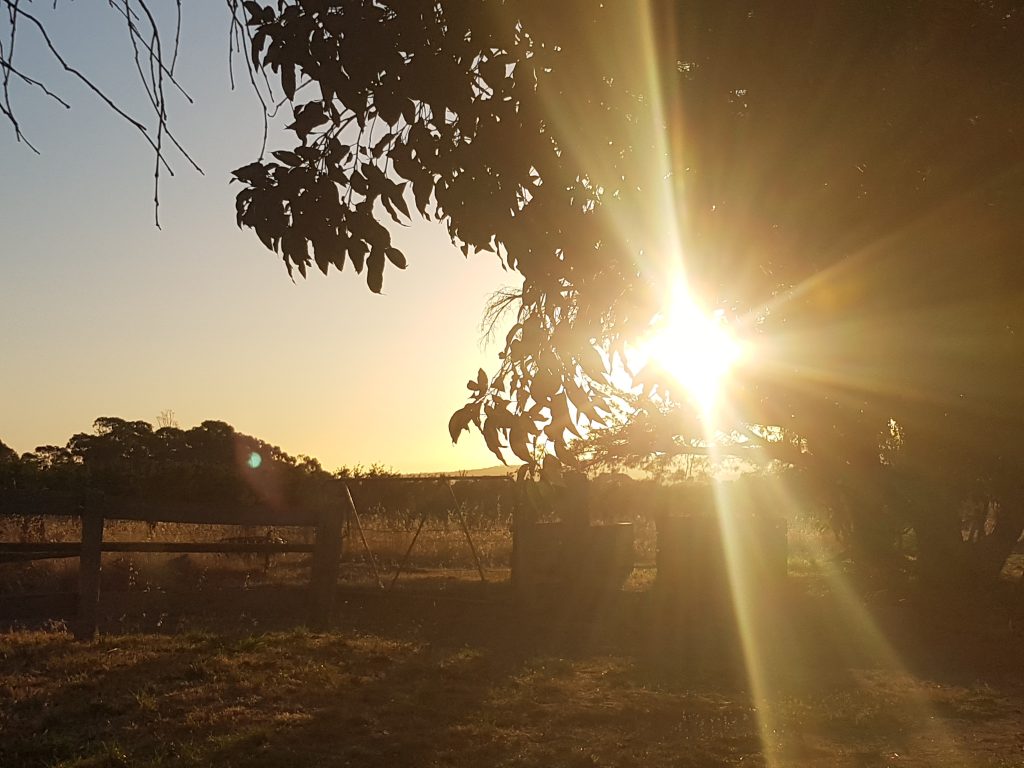
Why feed fruit trees in autumn?
There’s a good chance you’ve already fed your fruit trees in spring or summer (or both). Feeding them again in autumn is really just a case of ‘topping up’.
However, there’s also a really good reason for making sure they have enough nutrients at this time of year.
Your trees have already started the process of storing nutrients in their buds, bark, and roots. In fact, that’s why the leaves have started to change colour (though there are also plenty of other reasons why leaves can turn yellow).
This stored nutrition is what they will draw on next spring when they wake up and start flowering.

What happens to fruit trees in spring?
Flowering is the first thing most fruit trees do in spring—except apples and pears, which produce leaves first.
This happens before their roots have really started to function very much. Stored nutrition is critical to good flowering, and good flowering is crucial to a good fruit set.
It’s the powerhouse time of year! What happens in spring determines how much fruit you’ll get, and can even influence the fruit quality.
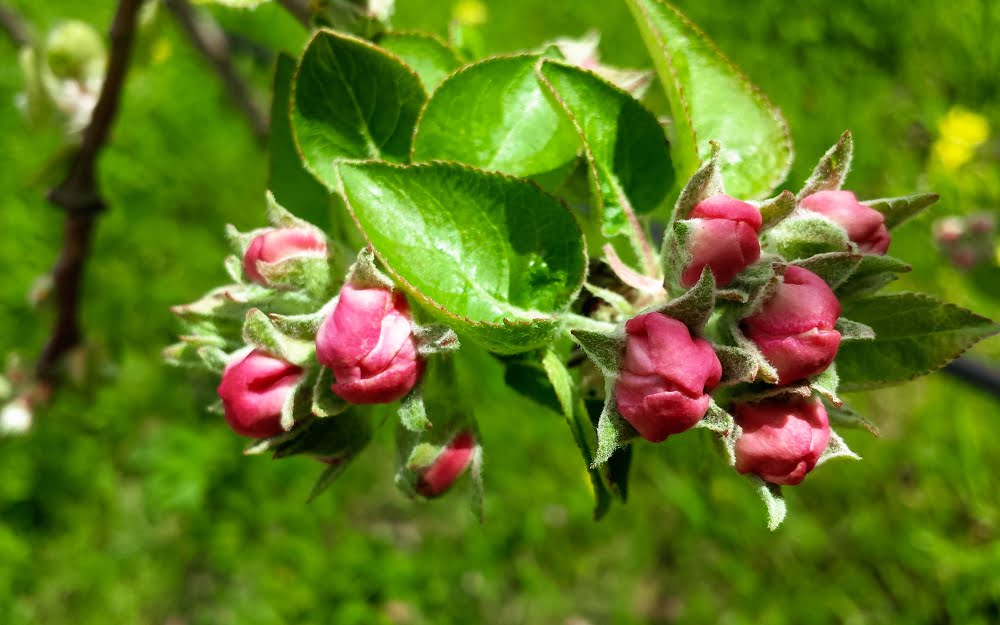
How to create natural fertility for fruit trees
In the natural farming system that we follow and teach, we don’t recommend using artificial fertilisers. They can easily cause more harm than good.
Instead, we recommend building a natural fertility system. This relies on having a diversity of organic matter and nutrients in the soil.
Then you just need lots of healthy soil microbes present to convert the nutrients into a plant-available form.

How to feed soil microbes
When we talk about nutrition, we’re really talking about feeding the microbes, so they can feed your trees.
So, what should you feed microbes?
Compost is always great, as is well-rotted manure. They both provide lots of organic matter and nutrients. Well-made compost should also contain a healthy diversity of microbes.
If you have a worm farm, worm castings or worm juice provide an excellent, and fast, nutrient boost for the microbes.
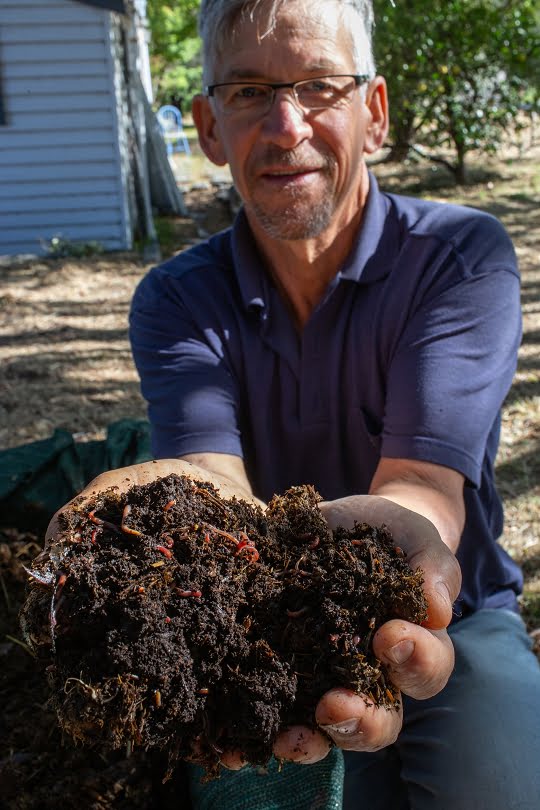
Liquid seaweed and liquid fish are also great and are available from garden centres under various brand names.
Even better (and if you want to save money), make a batch of compost tea, which is a form of brewed compost that can supercharge your soil.
Another compost by-product is called compost extract. This is made easily by soaking compost in water, and has several advantages. It makes your compost go further, is easy to put out on your trees with a watering can, and is much easier to make than compost tea.
Related Articles
Fruit tree leaves: bonus or problem?
Should you let the leaves from your fruit tree stay on the ground in autumn, or are you just asking for trouble? We’ll help you decide.
Should you spray your fruit trees in autumn?
Spraying fruit trees should always be kept to a minimum to protect soil health, but sometimes a spray in autumn is the right thing to do.
How to plant a green manure crop
Prepare the soil before planting fruit trees with an autumn green manure crop, and give your fruit trees the best possible chance to thrive.

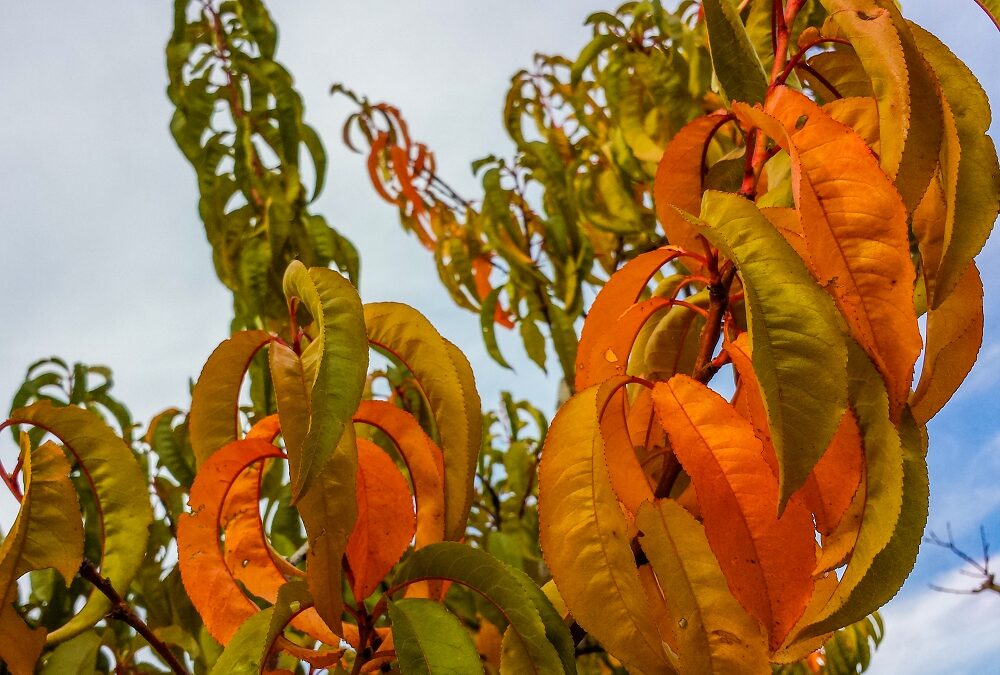

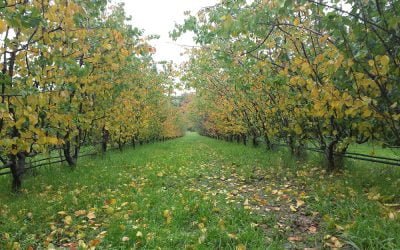
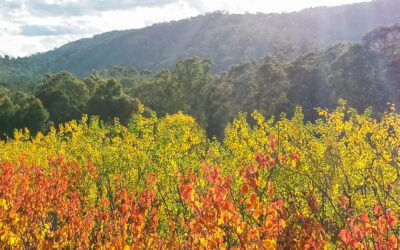
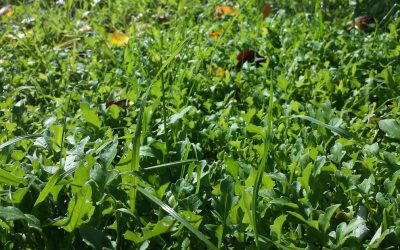


Thanks for the great tips this week. After some decent rain today the trees look much happier. I plan to give them a compost feed tomorrow in preparation for a Melbourne winter.
I gave my apple (4yr old) and fig (10yr old) a prune this week as I want to slow the growth on both to keep the size manageable for netting and harvesting. Do I need to seal the cuts in preparation for winter? If so what should I use? Also, was that a really bad idea?
My cherry tree has had bad cases of black aphids the last two years. No fruit grew.
When and what do I treat the tree so that the aphids don’t return this spring?
Hi Anne, A white oil (aka winter oil, dormant oil) spray in mid-winter will help to smother any aphids that overwinter in the tree. Bad outbreaks of aphids are usually a sign that the tree is not completely happy, so be sure to be working to imporove your soil = tree improvement. Apply good compost, some well-rotted manure or pelletised chicken manure, seasol and liquid fish regualrly through spring.
Thanks Carol, glad you’re finding the information useful!
Hi Ame, no, not a really bad idea at all – you can prune any time, you’ll just get slightly different results depending on what time of year you do it. And no, we don’t recommend sealing the pruning cuts, it’s too easy to seal pathogens into the cut, better to leave it to heal by itself (which it will usually do very quickly).
Hi,
I have a large peach tree. The leaves are dying back a bit now and i wondered when i should prune it back and how ‘hard back’ should I prune it?
Its not been pruned back before.
It produces a lot of fruit but always small fruit. (Maybe i should thin out the fruit in summer?)
Any information greatfully received!
Michael
Dunoon NSW
(Far north coast )
Hi Mick, we normally prune peaches and nectarines in winter, so need to rush on this yet. And when you do prune, just be careful not to prune off all of next year’s fruit buds (a common mistake with peaches because they only fruit on one year old wood.) We offer a short course that should help you with this, here’s the link: https://growgreatfruit.com/product/prune-for-success-and-self-reliance/.
And yes definitely re the pruning, it will make a big difference to the size of your fruit. Again, it’s a pretty simple skill that people either don’t do or don’t do enough, so we offer a short course on that as well – here’s the link: https://growgreatfruit.com/product/fruit-tree-thinning/.
Good luck with your peach tree.
Thanks for all the important reminders.
Is it wise to treat for leaf curl before leaf drop too? My peach tree had a terrible case of it last Spring.
Only if it’s been a persistent problem for several years despite using the correct spray at the right time in spring Nicole. We always try to avoid spraying if possible!
I have a grafted peach nectarine plum tree in a 40cm pot and also anothergrafted orange lemon mandarin in another pot
I wish to put these in their permanent position in the ground ground would it be ok to do it now
Hi Gloria, best to wait until winter when the peach/nect/plum tree is dormant. Not so important with citrus because they’re evergreen, but best to wait until the ground is cooler and (hopefully) we’ve had some rain!
When and how to prune fig, blueberry, pomegranate and mulberry trees
Hi Laura, they are all pruned using the same principles as for any fruit tree, please check out our pruning short course here – https://growgreatfruit.com/product/prune-for-success-and-self-reliance/
I notice in photos of your fruit trees that you allow grass to grow under the canopy. I’ve always tried to keep this area free of growing plants and covered with compost, chipped plant matter or straw. Should I be allowing weeds and grass to grow there instead?
Hi Janet, yes we’re much more in favour of a living mulch under the trees, as this has a greater benefit for the trees, the biodiversity, and the soil. Dr. Christine Jones has done a fantastic masterclass for us on this topic – we can highly recommend that you give it a look if you want to learn more about the ways that plants communicate with each other underground, and how plant roots bring so many benefits to the soil – https://growgreatfruit.com/product/the-under-story-masterclass/
Hi I’m need too the group very keen too soak up any info about fruit trees; I have transplanted a Brazilian grape tree stands about 2.5 meters tall after trimming right back for transport reasons, about a year ago.
And it seemed too take well too the néw position it produced fruit , but now the tree last leaves have died so the tree now has no leaves its positioned in a shaded spot as that’s what I found was the recommended thing too do an it was slightly sheltered by large mango trees were
It was originally positioned my question is weather or not it is able too produce new leaves or does it sound like it might have died ? I also have a second tree I’ve planted in front garden in full sun both transplanted at the same time this one has mannered too stay alive as it still has lots of leaves but not fruited at all both tres same size planted in different positions and very different results in other info is welcomed and appreciated
Hi John, the best way to check whether the tree that has lost its leaves is alive is to make a cut into the bark and see whether it’s brown (dead) or green (alive) underneath. They are evergreen trees so the fact that it’s lost its leaves isn’t a good sign unfortunately.
Hi Katie, my question has to do with the photo of your sprinkler system. We had a quote for an irrigation system with the poly pipe going around the base of the tree. I think your system would work better for us. Can you explain how you did it? Does the water spray the tree trunks? It looks like you have a hook attached to a branch to hold the piping up – does that work well?
Hi Cheryl, Note that these are drippers (8L/hr) not sprayers. We string the line from tree to tree using fencing wire bent into hooks to hang from a low limb – it’s pretty low-tech! The downsides of this are that the hooks need checking from time to time to ensure they’re not too small as the limb gets bigger; the pipe tends to hang in hoops between each tree and water lies in the pipe here and then can start encouraging algal growth as it heats when you’re not watering, which can lead to blocked drippers; and lastly it gives insects (eg, ants, earwigs) a nice little highway into the tree.
It is better in the long run, but a lot more work, to string a tensioned low wire (say, 30cm from the ground) along the line using steel posts, and then clip the irrigation pipe to that. The wire can then still run along the line of trees but does not have to touch the trees. It also avoids the hanging loops between each tree.
Hi Cheryl, I have installed irrigation systems in a few small orchards.
What I do is run the main line pollie pipe underground and ring the tree with 2-3 rings of 3 liters per hour dripper line with around 200mm between laid on the ground with a flushing tap.
I know it is a lot more work to install but found works very well.
Sounds like a good option Alan, thanks for sharing! Meg – GGF team.